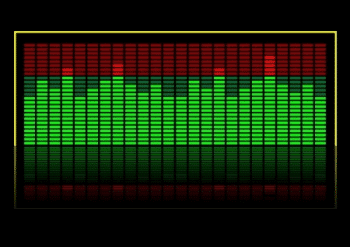Getting Started With Headroom

Preserving headroom in the recording process can be helpful for mixing and maintaining a musical dynamic range.
First off let’s define headroom. In practical terms it’s the difference between the highest peak on your audio signal and 0db on your DAW meter. If your signal peaks at around -6db, then you would have about 6dbs of headroom.
Having headroom on your signal when you record is important for four reasons.
- It keeps your track from clipping and becoming distorted.
- It allows you to preserve dynamic range in your track when mixing.
- It gives you plenty of safe space to add plugins when mixing, without getting close to peaking.
- It allows your music to be mastered properly.
Here are two tips for creating headroom in your mix from the start:
Record in 24 or 32 bit
Even the most modest recording interfaces allow you to record in 24 bit, and you should take advantage of that. As your bit depth goes up, the dynamic range of your recording expands. At 24 bit, the signal to noise ratio is generally very good, which allows you to record quieter signals without having to deal with a noise floor or a loss of clarity.
Currently audiophiles are starting to buy 24 bit mastered digital albums. Since this is the bit rate that artists originally record their album in; people are able to hear a more accurate sound as compared to the standard 16 bit.
Peak Between -10db and -6db
It’s always best to listen closely when you’re recording to make sure that you’re not getting any distortion from peaking or a corrupted audio signal. However, it can be equally as important to watch the meters on your interface and in your DAW. Most producers recommend you keep your track's maximum peaking between -10db and -6db. This gives you 6db of headroom, which is typically a good amount. The average level of your track should be around is -20db.
If you can get these two tips down, you’ll be setting yourself up for a much smoother mixing process and will have a more dynamic sounding track.




